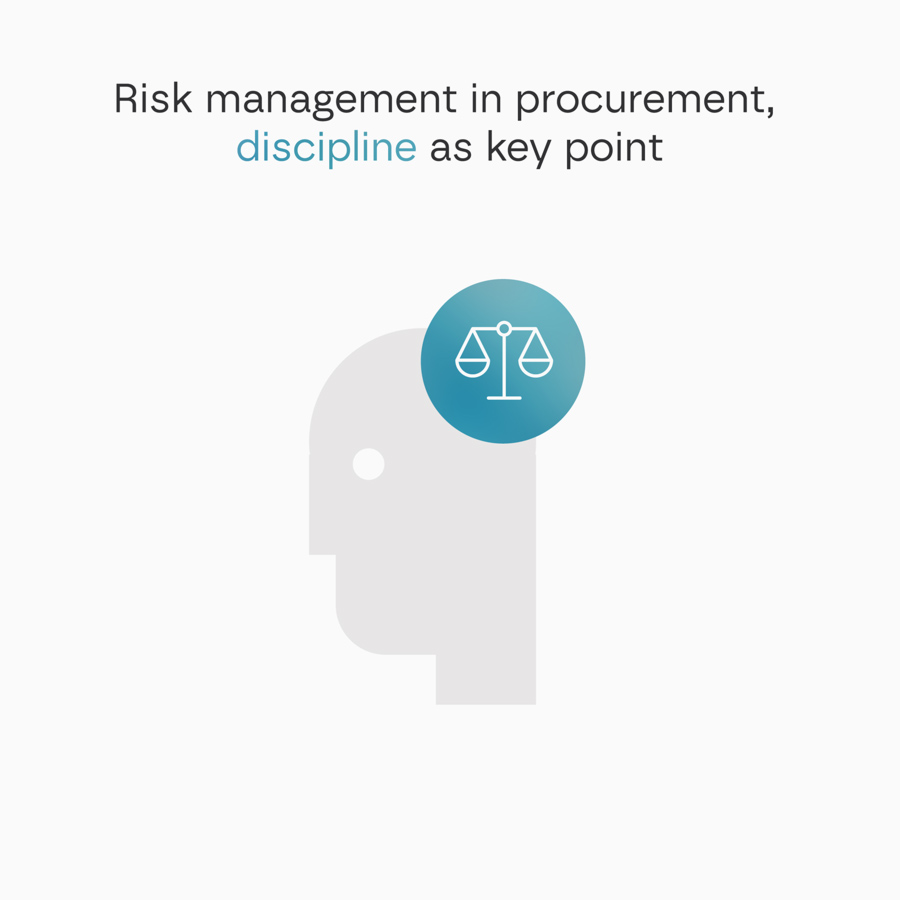DISCIPLINE AS KEY POINT


Proper and professional risk management is essential for any organization; minimizing the risk of shortage and bottlenecks in the supply chain, and consequently allowing the company to achieve its expected performance.
For proper risk management, a systematic approach must be implemented within the organization to regularly check in with suppliers regarding topics like environmental and social aspects, operation performance, compliance, contract management, etc. In addition, it is essential to assess financial stability and market analysis factors such as single source classification, dependency and number of locations, among others.
But even with a systematic process implemented, the risk will not be properly managed if the right mind-set is not instilled in the organization: to have the discipline to analyse the suppliers properly, neutrally, based on facts and values, and if needed to modify the strategy consequently according to the results.
How many times has a purchasing organization follow the ostrich strategy: not interested in actually assessing the risk and underestimating the potential impact on the company because “doing nothing” is easier than moving forward with a proper action plan to minimize or avoid risk?
Insolvencies, bottlenecks and shortages appear later on (surprise, surprise) and task forces are needed to solve the situation, but at that point with a huge investment in personal resources and additional cost for the company.
With this post I do not mean to say that with the right process and mind-set we can 100% avoid risk from the market. In some cases, it makes sense to take the risk due to the overall benefit for the company, but always assuring that the decision is made knowing all the pros and cons that come along with it.
If you are interested in investing in an exceptional team and increasing your company’s profitability, we encourage you to consider our next training focused on improving strategic purchasing skills. Additionally, please feel free to contact us for more information.
Comments are closed.